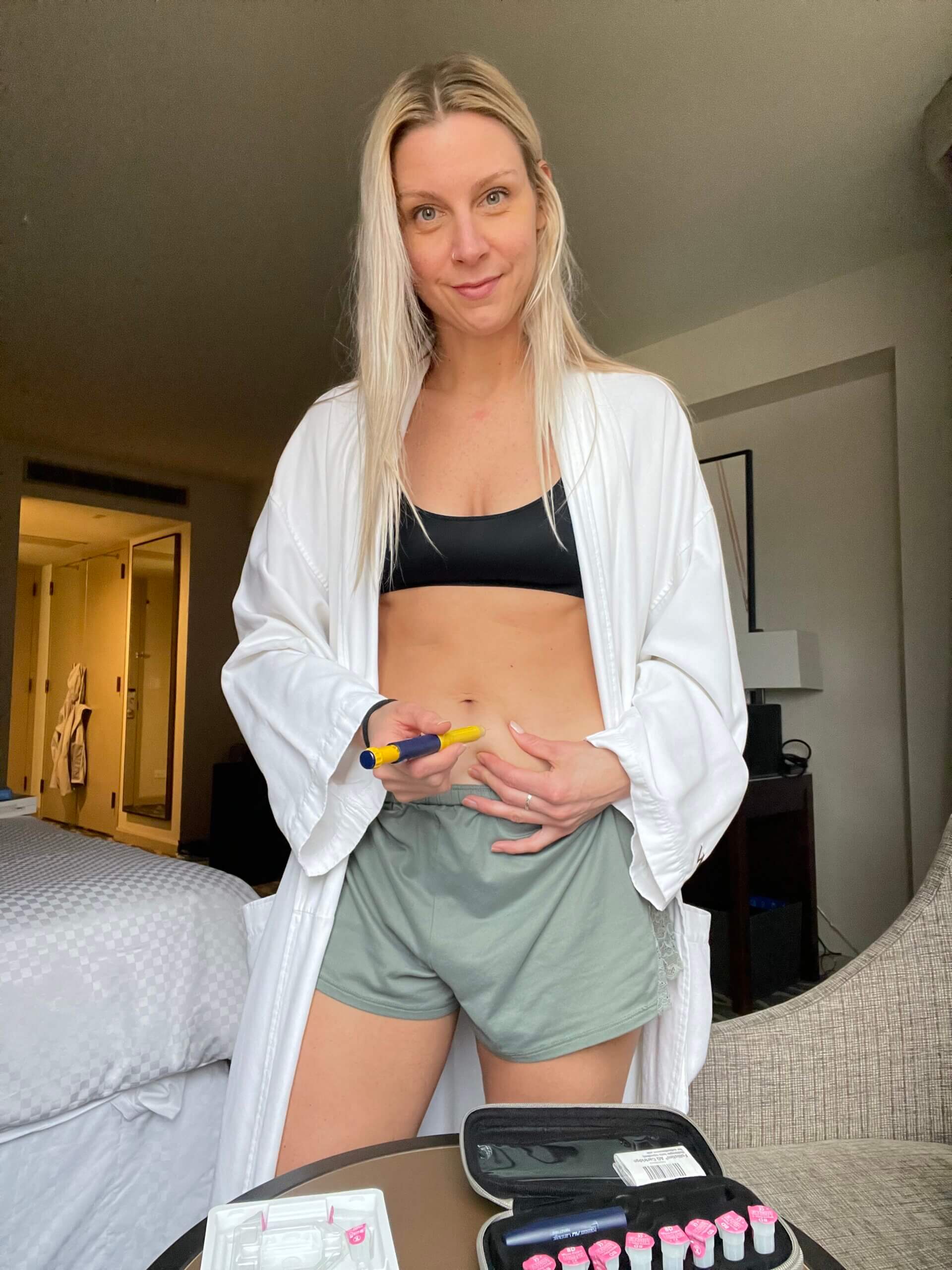
Why I Decided To Freeze My Eggs At 37
Ice, ice, baby!
The title is a bit of a misnomer. For one thing, though the decision was made months ago, the actual retrieval and freezing of said eggs happened just last week, a few days after my 38th birthday. And beyond “Why I decided to freeze my eggs,” I’m also going to be outlining the egg-freezing process, expectations vs. results, and the frustrations of navigating the American healthcare system. Weeee!
If you’ve ever thought about freezing your eggs, or wondered about the process, then buckle up, I’ve got all the info.
Disclaimer: I am NOT a doctor or healthcare professional. The experiences outlined in this post are solely my own and not intended as medical advice. Every person’s fertility journey is unique, and every egg-freezing experience will be as well. Take all of this for what it is—yet another personal anecdote.
Why I decided to freeze my eggs
The answer is simple: TIME.
I did an elective egg freezing to preserve my fertility. I think I want kids, but I don’t want them today. I didn’t want my biological clock hanging over my head, dictating my every move for the next few years, so I underwent a stop-gap measure to allow me the time to think, to prepare, to decide.
A Bit About Egg Freezing
*I’m not a doctor, so I’m going to put this in layman’s terms. If you want better information, check out one of the resources below.
For those of you who don’t know, women are born with all the eggs they’ll ever have. After our teens and twenties (when we are the most fertile), our egg quality starts to degrade and we lose some of our stash each month. This decline in egg count and quality happens much more rapidly after our mid-thirties, and if you happen to be a woman in this age bracket, it can feel like your fertility is careening off a cliff. 😊
Freezing your eggs gets the eggs out of your body and stops the clock. Instead of your eggs aging with you, degrading more and more rapidly along the way, they’ll be “Forever young”—or in my case, forever 38.
A common misconception is that women over a certain age can’t get pregnant, or shouldn’t, due to risk factors. Of course, this can be true in some cases, but the BIG, important factor is not the woman’s age, but the age and quality of her eggs. Having younger eggs enables a woman to get pregnant later in life—after she’s settled into her career, traveled the world, paid off those student loans, found a partner worthy of settling down with, or decided to become a mom on her own.
Not everyone who freezes their eggs is doing it for the same reason. Many people freeze their eggs for medical reasons—before they undergo chemotherapy, for example. If there is a medical risk of infertility, women will sometimes decide to freeze their eggs in advance. Women in same sex relationships might freeze their eggs so that their partner can carry their baby. People freeze their eggs to donate them to other people— gay men or single men wanting to become fathers, other women unable to use their own eggs. Even people who are able to become pregnant without medical intervention might opt to freeze their eggs for the option of having another child later, down the line.
Fertility preservation means options. And we love options.
Better resources than me:
How Many Eggs Does a Woman Have? At Birth, Age 30, 40, More (healthline.com)
Female Reproductive System: Structure & Function (clevelandclinic.org)
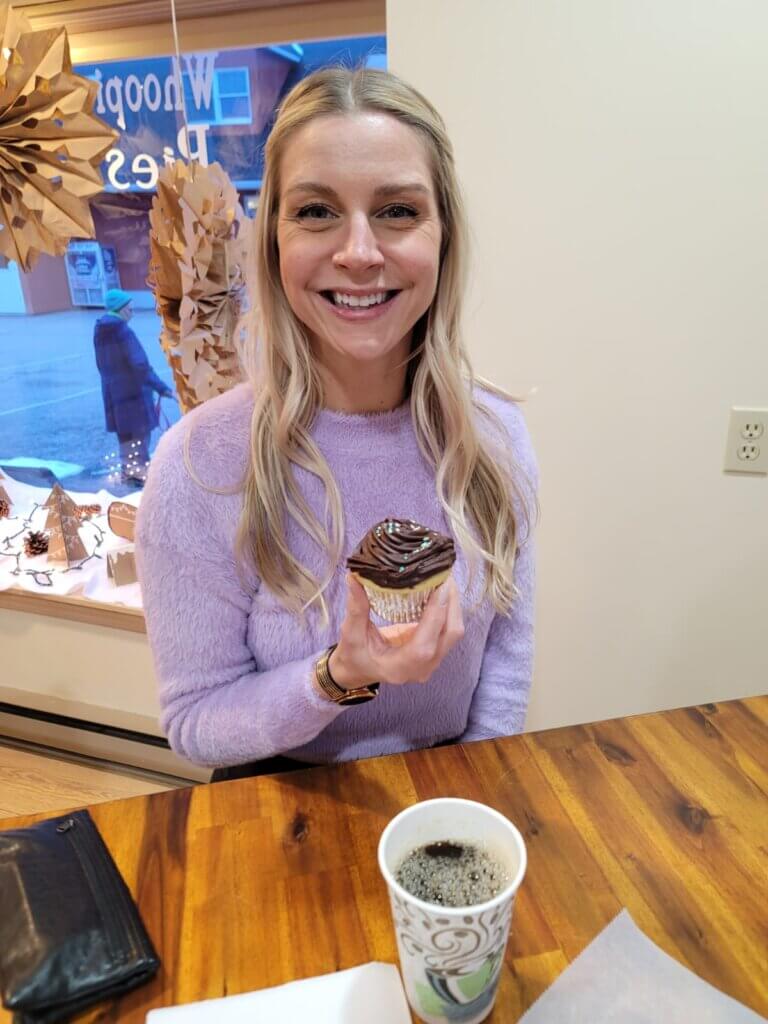
Despite my best efforts, I was not able to freeze my eggs before my 38th birthday.
Why now?
If egg quality decreases after your twenties, why did I wait until age 37 to freeze my eggs?
Another simple answer: Money.
My employer-provided insurance began covering elective egg freezing in 2023, so I decided in that year to do it. A round of egg freezing costs between $8,000 and $20,000. The costs vary based on location, the clinic you choose, the medications prescribed, and the pharmacy you use to fill them. Once you have the eggs out of your body, you can expect to pay $500-$1,000 per year in storage fees.
I wasn’t in the position to take on this cost earlier in my thirties (the first time I’d considered it), and so I didn’t.
There were times during the process that I felt silly for doing it; Freezing eggs already past their prime, in what would be called the “geriatric” stage. But today I am SO glad I took the initiative to preserve my fertility and feel SO lucky to have been able to do it with insurance coverage. This is a benefit that very few Americans have.
This entire post has to be taken with a grain of salt because of the immense privilege of my position. Most women have to pay these costs out of pocket, and there is always a small chance that the process could fail and yield not even a single egg. (This is incredibly rare, my doctor told me, so don’t be scared. I’m just being transparent with you.) I can complain about my healthcare coverage, or my frustrations in dealing with insurance companies in the late-capitalist hellscape in which we exist. But real talk, I am SO F*CKING LUCKY compared to most other Americans in this regard, and I do not take it lightly. If your employer offers fertility benefits, do yourself a favor and at least investigate your options.

Sure, I'd like to have kids... but not today.
The Egg Freezing Process
Something interesting to note is that the process of Egg Freezing and Invitro Fertilization, or IVF, are the same thing in the beginning. It is only once the eggs are retrieved from the body that the processes diverge—one batch ending up frozen in time, and the other becoming a fertilized embryo and, hopefully, a baby. The fertility adventure I went through will be similar to a lot of people’s beginning stages of IVF treatment. Cool, huh?
Everyone’s egg freezing or IVF journey will look a little different, but this is the gist of the cycle. (If you aren’t interested in learning about egg-freezing but still want to hear all my business about how it went, and expectations vs. reality, then skip ahead to this section.)
The Egg Freezing Process:
- Research
- Consultations
- Choose a doctor
- Preliminary testing
- Administrative bullshit
- Order Meds
- Cycle Day 1 – Baseline Testing
- Stims– meds, monitoring
- Trigger
- Retrieval
- After Retrieval
- Ice, Ice, Baby (Fertilization for IVF patients)
- Potentially, decide to start again
- Pay the Piper
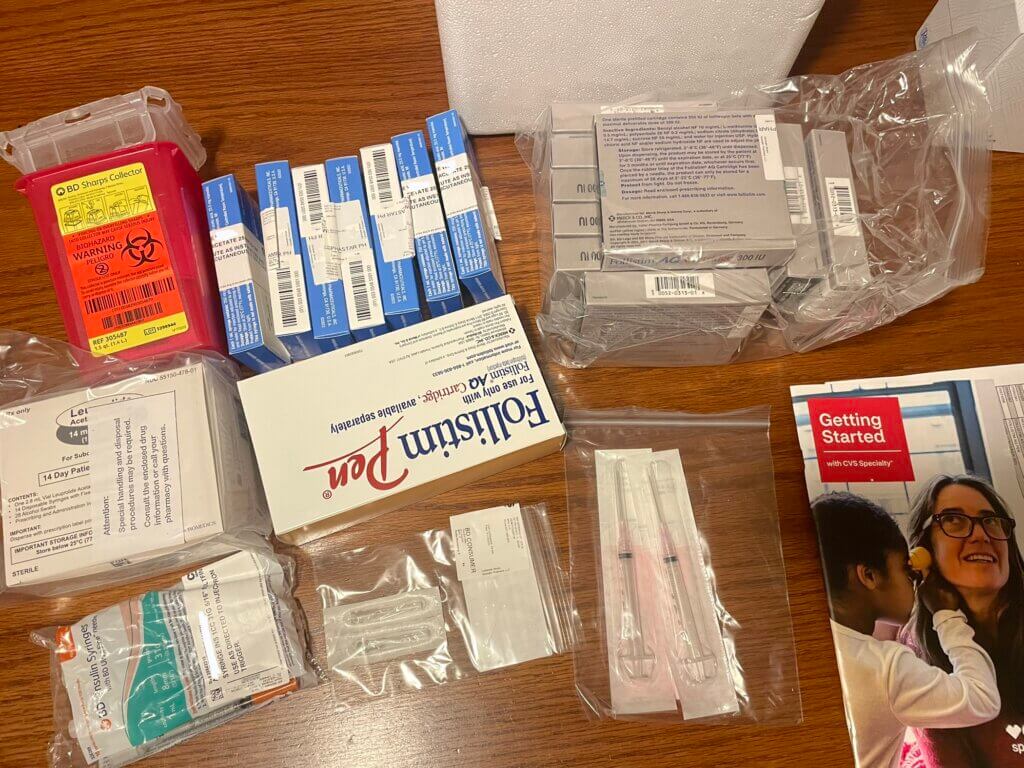
Let's do this!
1. RESEARCH
I set up consultations with four different fertility clinics, based on personal recommendations, internet reviews, and statistics. And, of course, which clinics accepted my insurance.
***IF YOU HAVE INSURANCE COVERAGE, THE FIRST THING YOU MUST DO IS ENSURE THE DOCTOR IS IN NETWORK. You also need to ensure their surgery center and lab is in network. Sounds ridiculous, right? That’s American healthcare. Please don’t waste your own time.
Resources:
Fertility IQ is a good resource for clinic and doctor reviews. They have a basic graph that shows success rates compared to the national average, but this is not the best place to get detailed statistics.
Fertility doctors in the US – FertilityIQ
For detailed comparative data, you’ll want to check out SART.org, the Society for Assisted Reproductive Technology. Under IVF Success, you can click National Average to see those statistics, and then “Find a Clinic” to see the numbers from the clinics you are considering. In addition, every clinic that you individually research, should have a link with statistics and success rates on their site. (If they do not, I would be weary.)
SART: Find a Clinic
Researching statistics can be a rabbit hole. I focused on two factors when comparing clinics—overall number & percentage of live births at my age range, and number of live births from successfully thawed eggs. This is the information that pertained to my specific situation, since, if I ever want to use these frozen eggs, they’ll have to be thawed. Percentage of live births at a given age just seemed like a good general indicator of success. If you are considering a different specific situation—a frozen embryo for example, using donor eggs—you’ll want to look at those statistics during your research phase.

But seriously, do your research.
2. Consultations
During your consultation, you’ll met with the doctor who will ask your goals and tell you a bit about the process and their practice. Then they’ll answer any questions you have. Don’t base your decision on just the internet. Schedule a couple consultations and ask questions! Some top questions might be:
-How does your clinic communicate with patients? (Through a portal, telephone, email?)
Communication with my clinic was mostly via telephone and I am HAUNTED by the sound of their phone tree. I would have preferred more electronic communication (and faster!)
-Do you do retrievals 365 days, or only during set time periods?
My clinic was small and only does retrievals one week each month. In order to do that they try to sync all the patients’ cycles. I’m difficult, so I had my cycle on off-days and had to drive a couple hours to a different location for my Retrieval. (Retrieval is the surgery where they remove your eggs!)
-Are eggs/embryos stored on site or somewhere else?
-Do you do your lab testing on site or somewhere else?
-Will I have one assigned nurse throughout this process or is everyone on staff available to me?
-Any questions specific to your situation.

Choose a doctor you feel comfortable with (but know you won't see them much.)
3. Choose a Doctor
Go with the doctor and clinic that you feel most comfortable with. Keep in mind, though, the doctor will likely be a behind-the-scenes figure and not someone you see often. (Retrievals are generally done by whichever doctor is doing them that day, and when you pop in for monitoring every few days, you’ll likely only see a phlebotomist, ultrasound tech, and maybe a nurse.)
I ended up cancelling two of my consultations. The two doctors I interviewed were personally recommended, had great reviews on Fertility IQ, and were above average in the statistics that mattered to me. Knowing I’d have a co-pay for each consultation, I figured it was better to narrow my options and not risk hundreds of dollars before I even got started on the expensive part of the journey.
Truthfully, I liked both doctors. I could have been happy with either one, I think. So, I went with the one that was closer to me.
Done!
4. Preliminary Testing
After a consultation, the doctor will likely tell you “Call us on cycle day one” to schedule testing.
You’ll need to have bloodwork and an ultrasound to see where your body is at, fertility-wise. This happens between days 2 and 4 of your cycle. The doctor will use these results to design a treatment plan for you, including medications, how often you’ll take them, and whether or not you’ll be on birth control leading up to Ovarian Stimulation, or “Stims”.

How Step 5 feels.
5. Administrative Bullshit
During this phase you’ll sign consent forms, you’ll get pre-authorization from your insurer (if you’re using insurance) for the procedure and medications, you’ll probably pay a down payment, if paying out of pocket, and you will get a list of medications that you’ll be taking. You will need to call several fertility pharmacies to compare costs for these meds, they are incredibly expensive.
This was by far the worst part of the process. I would stab myself with double the needles if it meant someone else could do the administrative bullshit on my behalf.
My fertility benefits go through a third-party authorizer. So even though my health insurance company pays the bill, this third-party company is the one who authorizes them to pay. They give the green light, basically.
Every time I needed to move forward in the egg freezing process, it required talking to my clinic, then talking to The Authorizer, then sometimes to my insurer, and sometimes to pharmacies. It was hard to know who to call sometimes, since there were so many cooks in the kitchen. It was made more difficult because of my clinic’s slow(-er than I wanted) communication.
The worst part about juggling communication between several different entities, for a process that means the world to you, is that you cannot just do your part. You will fall through the cracks. Nobody cares about your fertility like you do. Not your clinic, not your doctor, not your pharmacist, and certainly not your insurer. You will do everything you are told, in a timely manner, only to find out that someone else in the chain forgot to send the email, didn’t return a phone call, or is sitting on your documents instead of approving them. You, and I cannot stress this enough, MUST help them to do their jobs.
I was told “We can’t start until you sign your consent forms”—forms that were never sent to me. I was told formatting my treatment plan into a “flow chart” could take THREE DAYS. I was told “There is no way you can do it next month.” I was told “Your pre-authorization will take up to three weeks”, only to have it take two DAYS. I was told to keep taking birth control—delaying my cycle—so that I could start on a Monday instead of Friday, taking up four extra days of my time for no good reason.
At every step along the way I had to push back and advocate for myself. I had to call and follow up with everyone. I had to wait for callbacks and emails, and sometimes they just didn’t come.
If you are starting the process of freezing your eggs or undergoing IVF, prepare yourself for this phase. It is the most stressful part of the entire thing. Just hold on and take it one call at a time. Once you push through this part, it does get better.
6. Order Meds
We made it through the bullshit, now it’s time to order meds!
Call around to compare pharmacies. Ask about alternative meds. Some of the different fertility medications are the same chemical compounds but have wildly different price tags. If you are using insurance, your insurer will let you know which meds they cover, and will suggest these alternatives if applicable.
You must have the medications in your possession before moving forward, so order ASAP. Most fertility pharmacies do next day shipping. Buckle up, WE ARE STARTING STIMS!
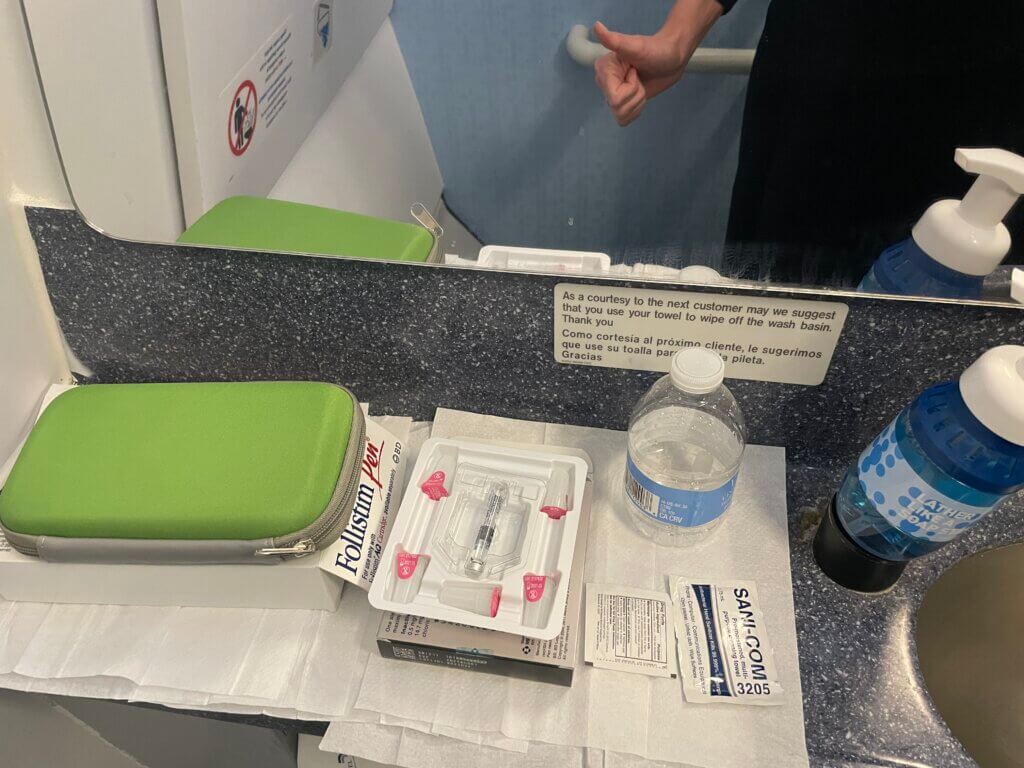
Nothing more romantic than a needle in an aircraft lav. <3
7. Baseline Testing
On Cycle Day 1, you call your clinic and they schedule an appointment for Baseline Testing. This is another round of bloodwork and an ultrasound, to make sure your body is ready to start ovarian stimulation. This will happen sometime between Cycle Day 1 and Day 3.
After baseline results are processed, you’ll receive instructions, via phone or patient portal, on what to do next.
8. Ovarian Stimulation, “Stims”
Ovarian stimulation, or “stims”, is the part of this process you’ve likely heard of (and may sound scary to you.) During this phase, you are injecting your body with hormonal medications to help you produce as many mature eggs as possible.
Stims takes between 10-14 days, on average, and requires “monitoring appointments”, which consist of an ultrasound and bloodwork, every couple of days. Your doctor may tweak your dosage, add or subtract medications along the way as needed. Once your eggs and hormone levels are at the right size and level, you will do the next step: Triggering.
Every body is different, so every medication cocktail will be, too. I was lucky with my drug regimen. I only had to inject one medication per day, between 6-8pm, for the first week, then added a second injection at the same time for the second week.
I was worried about the prospect of injecting myself with needles. But it was not bad at all. The needles were small, fine, and manageable.
There are things to avoid during stims: No vigorous physical activity, no unprotected sex, no soaking in hot water or sitting in saunas, limited caffeine, and only Tylenol for pain relief.
And there are varying symptoms that people experience: Bloating, cramping, bruising at injection sites. If you experience serious pain, bruising, bleeding, talk to your doctor.
For more info on ovarian stimulation, check out these resources:
Ovarian Stimulation and Egg Retrieval | Stanford Health Care
What to Expect From Ovarian Stimulation in IVF | Aspire Fertility

In homes, hotels, & airplanes.
9. Triggering
Once your body has reached the appropriate level of hormones and the majority of your eggs are matured, your clinic will tell you “You’re triggering.” They will give you a precise time to inject your trigger shots, and it is important to do this on time.
Your trigger shot will be a shot or series of shots that cause your body to begin ovulating. Trigger happens exactly 36 hours before retrieval, hence the need for precision. I was lucky to have been given a 10pm trigger time. Some people have to trigger in the middle of the night because of their scheduled retrieval time.
My advice for trigger is to get your meds out early and start getting them ready well before shot time. After two weeks of the same shots, I felt like a professional, but the 30 minutes I gave myself to prepare on trigger night was not enough. I ended up finishing my last injections six minutes after Trigger time. It turned out fine, but give yourself plenty of time.
On trigger night you take different medications. These medications, unlike my others, required mixing a powder and a liquid, at a specific concentrate, with a syringe and little glass tube. It was scary. If you mess up your trigger shot, all is lost! You could be forced to start all over again next cycle! All those needles for nothing! And also, I’m not a freaking chemist!
But you’ve totally got this. You’ll do great. The night after trigger, before retrieval, you will be rewarded with a night free of shots. It will feel weird, but in a good way.
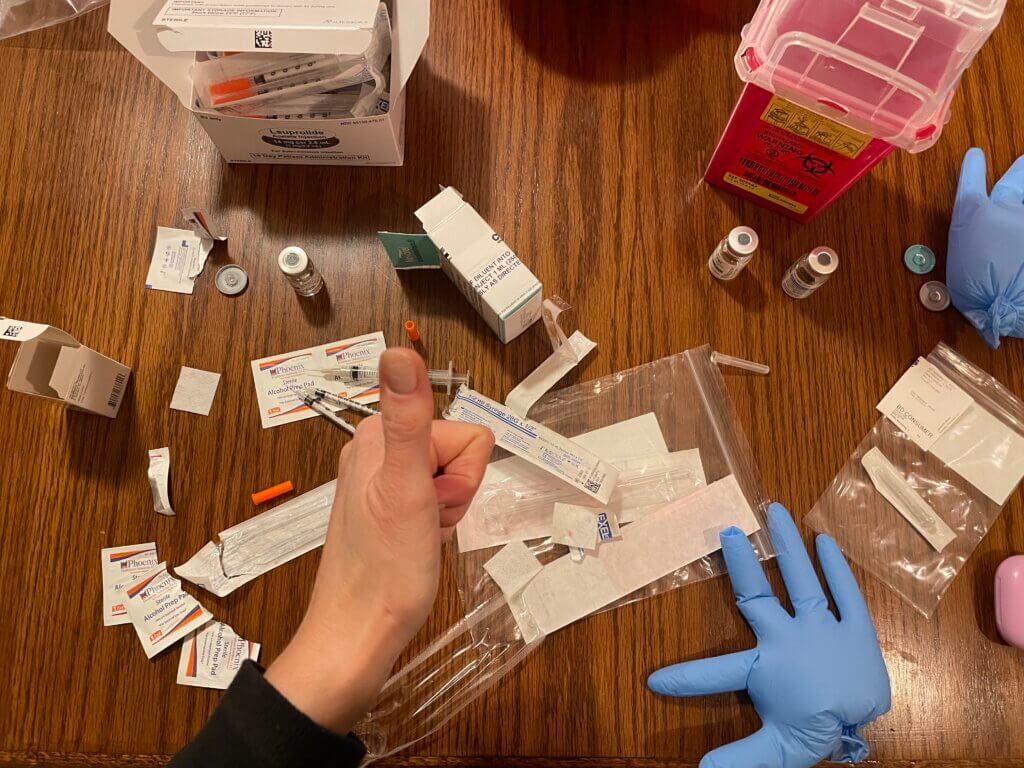
Mixing trigger meds was my ``Lessons In Chemistry`` (IYKYK)
10. Retrieval
The big day! Retrieval is the surgical procedure of removing your eggs from your body. It is what the last few weeks (and months, if you count all the way back to step 1) have been leading up to.
The night before retrieval you prepare the way you would for other medical procedures. No eating or drinking (not even water or mints!) after a certain time. My nurse told me no food or water after 10pm, so I went by that measure, but in another section of pre-op literature “no eating or drinking after midnight” was mentioned. I guess it is better to be safe than sorry.
You must have an adult accompany you to the appointment to drive you home, as you’ll be undergoing light anesthesia. Wear comfy clothes, because it will feel like a little nap!
After you’ve signed all the forms, had your blood pressure taken and IV attached, met the doctor, the anesthesiologist, and a bunch of other medical people, you’ll be ready for your retrieval.
The procedure takes about ten minutes, and you’re under light anesthesia. Light cramping or spotting are some of the effects afterward that you might have, but no real pain or severe discomfort.
After your eggs have been harvested, you’ll be wheeled into a recovery room to hang out, wake up, and have a drink and a snack—finally! Staff should be able to tell you how many eggs were retrieved, but that is not the number that will end up frozen. They only freeze the mature eggs. So later that day, you’ll receive a call or email with this information. It’s an exciting day!
For more details on the retrieval process, click here:
Egg Retrieval Process Explained: What To Expect Before, During, & After (pfcla.com)
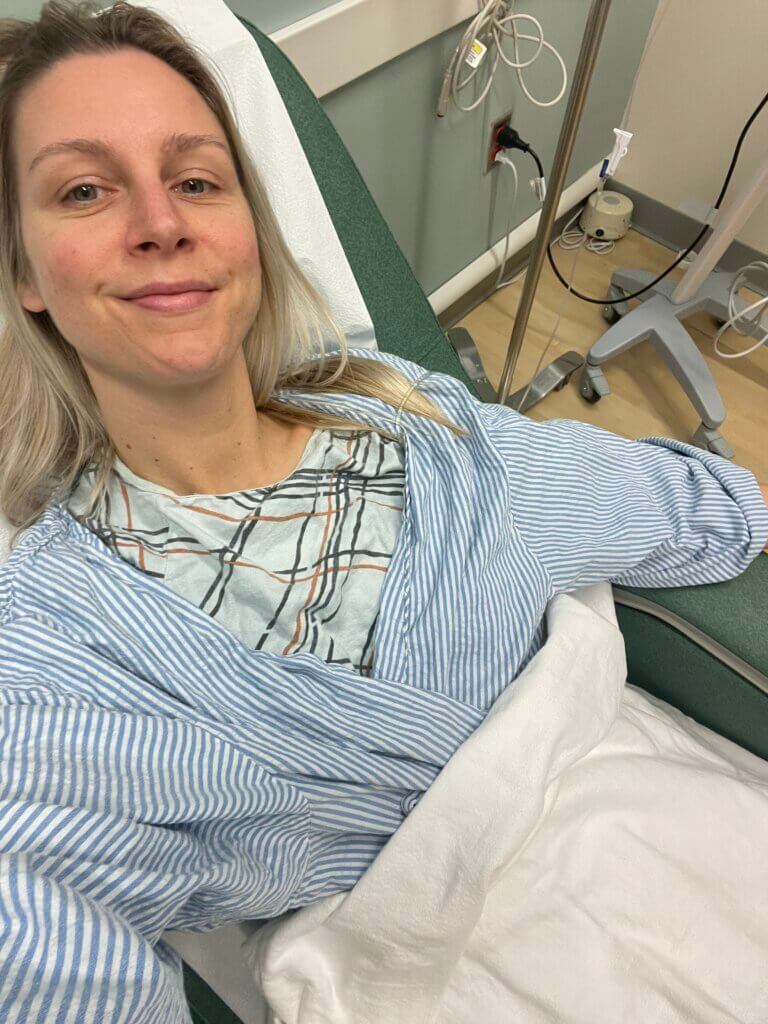
Ready for my anesthesia nap.
11. After Retrieval
After they determine which and how many eggs are mature, those ones will be frozen!
FOREVER YOUNG. (Forever 38.)
Technology has come a long way in the past two decades, and my clinic informed me that my eggs are frozen not in a freezer, but in liquid nitrogen. They’ll stay there, in their liquid nitrogen burrow, until I decided I’d like to use them. If and when that day comes, I’ll move on to the next step of the IVF process, fertilization.
For IVF patients, they move on to fertilization right away.
Both IVF patients and Egg Freeze patients will have the ability to assess their numbers and then choose whether to do another round of stims. I had a number in my head of how many eggs I hoped to freeze. If I was short of this number after retrieval, I would have done another round of stims in order to get more. Remember, not every egg will produce a baby. So the more eggs you have, the more opportunity you have. Lucky for me, I got a number that was more than I hoped for, and I felt very comfortable deciding to leave it at that.
At some point, a bill will come, and you’ll have to pay the piper. Womp, womp. I have no idea what my out-of-pocket cost will be for this round, but I know it will be far less than if I was paying on my own. I added additional funds to my flex spending account this year, and between that and my healthy rewards funds (rolled over year after year to a pretty sizeable amount) I shouldn’t have to pay much in “real money”. Again, I know, privilege, privilege, privilege. If you are a coworker reading this, take heed. This is a crazy good health benefit.
And that sums up the Egg Freezing Process. Obviously I’m not an expert, just a girl with a steady injection hand and a bunch of eggs on ice. For more specific medical info, seek guidance from the internet or an actual professional doctor.
In the next section, I’m going to discuss my expectations about Egg Freezing, and how they differed from reality.

Thank god I can drink 100 coffees per day again.
Expectations & Reality
There are things you are told and things you research when entering a project like this. I spoke with three people who have done egg freezing or IVF. Two of them told me their experiences after the fact, and one I got to watch go through it in real time, on her journey from start to retrieval.
It was so great to have been exposed to this before jumping in myself, as it would have been completely foreign, and stressful, otherwise. That being said, there were expectations I had that, when my own body responded differently, made me nervous. I’m going to talk a bit about some of these expectations.
1. Timeline
STIMS should last 10-14 days, says the internet, most doctors, and my friends who went through it.
But after watching a friend trigger very quickly, on day 9, it made me feel worried about my own timeline. I did retrieval on day 15 of this process. I wondered why my body was taking so “long”. Was this working? Is something wrong? Are my eggs rotten?!
It was working. Everything was fine. I ended with a result I couldn’t be happier with. Every body is different. It’s easy to know this logically, but it takes a lot to trust in the process and believe your body is doing its best at its own pace.
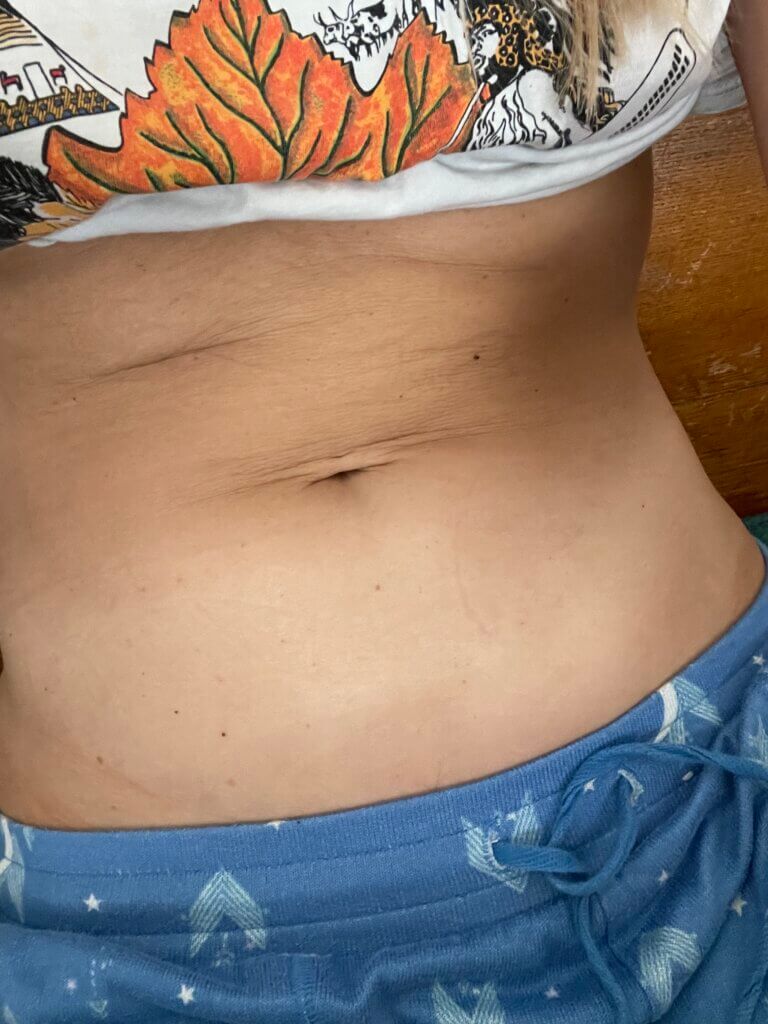
Day 14 of injections, and not a bruise in sight.
2. Symptoms
I was told that “The pre-retrieval bloat is real” or, by one person, that it would be painful, even. I heard tales of a stomach so full and tight that it hurt to sit and buckle up. I was also told I would “definitely” have bruising on my belly, from all the injections.
Those experiences are totally valid, but I experienced almost none of this.
It was the day before retrieval (cycle day 14) that I saw the slightest bit of puffiness in my lower belly. I expected a distended belly, stuck way out and uncomfortable. Instead, I had a little bit of bloat that was not as bad as some taco Tuesdays.
Throughout the process, I was looking out for this. Every morning, as soon as I woke up, I’d lift my shirt and lower my pajama pants to look for changes in my belly. And day after day, I was both happy (“looking slim today!”) and anxious (“is this working at ALL?”) to find that my stomach remained relatively flat and unmarked my bruising.
After week one, when I started taking a second shot every evening, with a needle that felt harder to insert, I was certain THIS would be the start of bruising. But it never came. Not even after my three trigger shots, on the last day of this process, did I wake with any hint of discoloration.
Because of these expectations not happening, I worried that the process wasn’t working. Surely if my eggs were grown and maturing I would feel my belly grow with them. Surely, I should be facing some bruises by now—13 days of pokes in the same area day after day.
But there wasn’t any need to worry, everything was fine. Every body is different, every protocol is slightly different, and every body will respond differently to this treatment.

DO NOT Research every other person's timeline, symptoms, cost, or number of eggs!
3. Protocol/Medications
One of the people I spoke to about Stims—the first person I watched go through it, was taking morning and night medications, including pills and multiple injections. She was even mixing some of her own medications! This made stims look pretty disruptive to normal life. When I was planning my own egg freezing journey, I took two weeks off from work to be able to do it.
But my protocol was completely different to hers. I only had one shot nightly, taken in a two-hour window, for the first week, increased to two shots, taken at the same time for the second week. I didn’t have to mix meds until Trigger shots, and I had no morning meds. Because of this, my stims process was so easy it hardly disrupted my life at all. I went to work several times while Stimming. I took my shots at home, in hotels, and even on the airplane once. It was a pleasant surprise to see how much I could still live my life as normal while doing it. And when I contemplated doing a second round (if this first one didn’t yield good results), it gave me comfort to know it probably wouldn’t require too much planning.
4. Number of eggs
Comparing fertility numbers with other people is like comparing your body, vacation, family, or life to everyone else’s on Instagram. Not healthy, not fun.
I hoped for a certain number of eggs, but due to several factors—talking to other people, no sign of bloating or bruising, taking forever to trigger, my nurse telling me “You don’t have a ton, but you have some,” I started preparing myself for a very low number. I mentally prepared myself to do stims again.
And guess what, NURSE? I did, in fact, have a ton. More than I even dared to hope for.

More eggs than I hoped for, happy birthday to me.
5. Cost
I did my egg freezing process with the help of insurance. This made it frustrating, sometimes maddening, on the front end. (Dealing within the American healthcare system is not a feat for the faint of heart.) But in the end, it allowed me to pay very little out of pocket for this expensive procedure. I’m so lucky for that.
But even when seeming to compare apples to apples—amongst my coworkers who have used this same benefit—there is so much variation. A friend of mine paid multiple thousands of dollars out of pocket for her medications, telling me this was the most expensive part of the whole thing. My medications cost me just under $800 after insurance coverage.
Perhaps the fees from my clinic, when they come in, will be more than hers. The point is, this process is so individually tailored, and dependent on so many specific factors, it is hard to ever compare your experience—from symptoms, to timeline, to numbers of eggs or dollars—to anyone else’s.

Whatever your results, being in the driver's seat of your fertility is empowering AF.

And taking action for the wild, wacky, weirdo family you want is totally worth it in the end.
So there you have it. Now you know all my business about why I decided to freeze my eggs, how the process went for me, and maybe more info about egg freezing than you ever cared to know. I hope this post is useful for anyone considering egg freezing, IVF, or other fertility preservation measures. From start to finish this process took me 3.5 months, researching to Retrieval, and I am so, SO glad I did it.
If any of my co-workers are considering egg freezing or IVF, or want to hear specific information about how this works with OUR insurance, please reach out to me directly. This is an incredible benefit, and I’m thrilled to answer any questions I can!
Taking deliberate steps to preserve, enhance, take care of your fertility feels extremely empowering. For all the people out there working towards a current fertility goal, I see you, I’m rooting for you. You’ve got this. For everyone setting themselves up with more time, you are thoughtful and a badass. For everyone undergoing alternative methods to have the family you have always wanted—whatever that looks like—you are tenacious, inspiring, incredible.
I hope that in the future, more people have access to these tools. I pray for socialized medicine to make its way to America and for everyone, regardless of financial status or which company they work for, to be able to have all the autonomy they deserve in their fertility decisions.
Until then, do the research, ask for help, find a way.
Have the best weekend, guys. <3



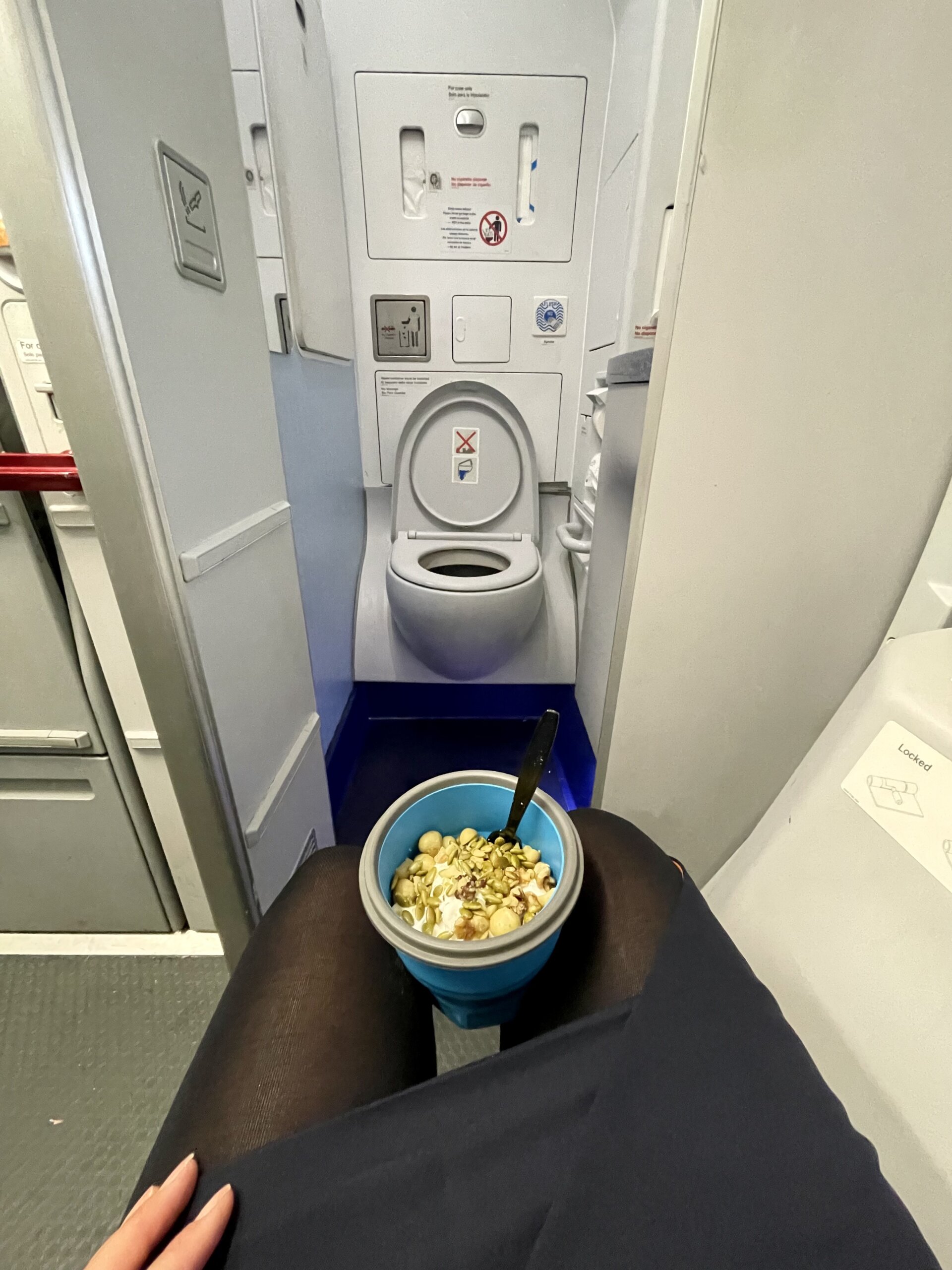
Corey Bee
👏 👏 👏 👏 👏 YOU DID IT!!!!!! You are an empowering and inspiring woman! Empowered women, empower women. And you are one of those women! Beautifully written as always. This is a true accomplishment. All the effort was worth it!!!! Love having front row seats to your spectacular journey of life! Love you
Toni
Thanks for the support!
Rae
❤️❤️❤️❤️❤️❤️❤️❤️❤️❤️❤️❤️❤️❤️❤️